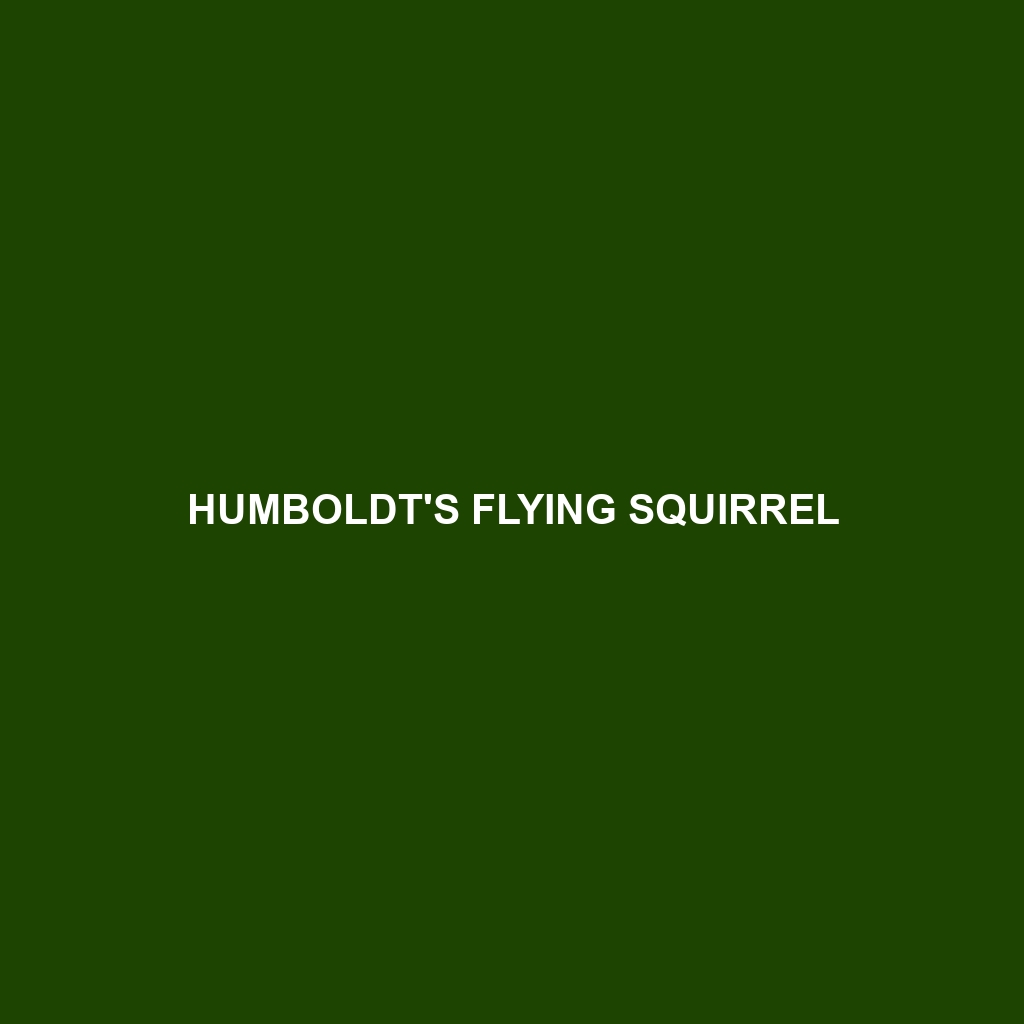Humboldt’s Flying Squirrel
Common Name: Humboldt’s Flying Squirrel
Scientific Name: Glaucomys oregonensis
Habitat
Humboldt’s Flying Squirrel primarily inhabits the temperate rainforests of the Pacific Northwest, particularly in regions of northern California and southern Oregon. This species thrives in mature, old-growth forests where it can find an abundance of dense canopy cover and suitable nesting sites. The humid and shaded environment is essential for their survival as it fulfills their shelter and foraging needs.
Physical Characteristics
This medium-sized squirrel typically measures between 24 to 30 inches in length, including its bushy tail, which is nearly as long as its body. Its fur is soft and dense, displaying a rich gray-brown color with creamy white underparts. Distinctive features include large, expressive eyes adapted for nocturnal activity and an impressive gliding membrane that stretches from their wrists to their ankles, aiding in their ability to glide between trees.
Behavior
Humboldt’s Flying Squirrel is primarily nocturnal, becoming active in the evening. They are known for their gliding abilities, which allow them to traverse distances of over 150 feet from tree to tree. Social in nature, these squirrels often inhabit communal nests during colder months, fostering social interactions and enhancing cooperative behaviors. They are also known for their vocalizations, which play an essential role in communication among individuals.
Diet
This species is primarily herbivorous, with a diet consisting of nuts, seeds, fruits, and fungi. They are particularly fond of acorns and the seeds of coniferous trees. Humboldt’s Flying Squirrel is integral to the dispersal of these seeds, contributing significantly to the health of their forest ecosystem. They are also opportunistic feeders and may occasionally consume insects or tree bark.
Reproduction
The breeding season for Humboldt’s Flying Squirrel typically occurs between late winter and early spring. After a gestation period of about 40 days, females give birth to one to four young, known as kits. The kits are born blind and hairless, relying heavily on their mother’s care. They begin to venture out of the nest at around two months but remain dependent on their mother for several months longer.
Conservation Status
Humboldt’s Flying Squirrel is currently listed as vulnerable due to habitat loss primarily caused by logging and urban development. Conservation efforts are ongoing, focusing on habitat preservation and restoration, particularly within critical old-growth forest areas.
Interesting Facts
One fascinating fact about Humboldt’s Flying Squirrel is that they can glide with incredible precision, using their tails as rudders to steer while in mid-air. Their nocturnal lifestyle allows them to avoid predators, and their large, sensitive eyes enable them to see well in low light, making them highly adapted for their lifestyle.
Role in Ecosystem
Humboldt’s Flying Squirrel plays a vital role in its ecosystem as a seed disperser, aiding in the regeneration of forest habitats. They contribute to the biodiversity of their environment and serve as prey for larger predators, including owls and coyotes, thereby maintaining a balanced food web and promoting ecological health.
